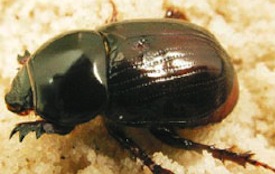How to Get Rid of African Lovegrass in Your Lawn
African Lovegrass (Eragrostis curvula) is a tufted, grassy weed that’s most prevalent in Australian pastures and grazing land, but it can impact home lawns too. Originally ...

Redheaded Cockchafer (Adoryphorus couloni) is a common pest that can wreak havoc on home lawns across southern Australia, and are particularly active during atypical rain events in otherwise damp parts of the nation.
Data shows that populations are more likely to reach infestation levels in regions that typically receive around 500mm of annual rainfall, but are currently experiencing lower than average rainfall which could mean that they’re likely to be active in lawns already experiencing stress from low water.
Not unlike the African Black beetle, Redheaded Cockchafer lives below the soil surface and feeds on the roots of plants, crops and home lawns making damage difficult to spot at first, but potentially devastating to your patch of turf.
Luckily, they can be effectively managed with readily available pesticides, and can be deterred with preventative measures like Acelepryn.

The Redheaded Cockchafer is an Australian scarab beetle that is particularly troublesome in lawns and pastures.
As the name suggests, adult Redheaded Cockchafers have a reddish-brown head and a dark brown to black body. The larvae, often referred to as ‘white grubs’, are C-shaped, creamy white, and typically found in the soil just below the grass surface.
This pest is widespread across the temperate regions of Australia, especially in Victoria, Tasmania, South Australia and parts of New South Wales. They’ll be more active above the soil layer during August to September when they move around to lay their eggs, which will hatch between October to December.
It’s the larvae that pose the most threat to your crop or home lawn, specifically in the mature stage where they’ll eat voraciously and cause the most damage to decaying organic matter and the plant’s root system.
Understanding the life cycle of this pest is key to effective control:
As with any lawn grub, it’s important to mitigate devastating results by quickly identifying an outbreak, and taking precautions to protect your lawn.
Redheaded Cockchafer damage will manifest as patchy, dying grass as the larvae demolish the grass from the roots up. At a time of the year when your lawn should be its thickest and most lively, bug–affected lawns will take a sudden dip in condition and can start thinning out. Due to the damage sustained to the roots, the canopy may become so destabilized that it can be easily pulled from the ground in tufts.
You might also notice an increase of bird activity around the lawn, or the presence of Parasitic Wasps seeking to lay their own eggs in any surface dwelling bugs.
As with any lawn grub, it’s important to mitigate devastating results by quickly identifying an outbreak, and taking precautions to protect your lawn.
Redheaded Cockchafer damage will manifest as patchy, dying grass as the larvae demolish the grass from the roots up. At a time of the year when your lawn should be its thickest and most lively, bug–affected lawns will take a sudden dip in condition and can start thinning out. Due to the damage sustained to the roots, the canopy may become so destabilized that it can be easily pulled from the ground in tufts.
You might also notice an increase of bird activity around the lawn, or the presence of Parasitic Wasps seeking to lay their own eggs in any surface dwelling bugs.
Effective management of redheaded cockchafer infestation requires a multifaceted approach encompassing cultural, biological, chemical, and mechanical control methods. By implementing the top tips recommended by TurfBreed Turf Manager Nathan Tovey, homeowners can mitigate redheaded cockchafer damage and maintain a healthy, resilient lawn. Visit myhomeTURF’s online shop for more lawn care products.